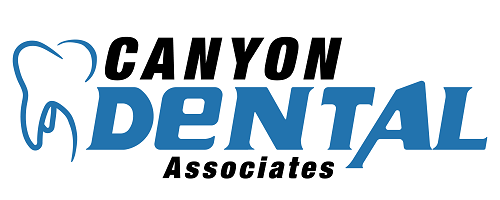Choosing the right dental insurance plan can be challenging, especially with so many options available. The most common types of dental insurance plans are PPO (Preferred Provider Organization) and HMO (Health Maintenance Organization), also known as a Dental Health Maintenance Organization (DHMO). Each plan type offers different benefits, coverage options, and costs. In this blog, we’ll explore the key differences between PPO and HMO dental insurance plans, helping you make an informed decision for your dental care needs.
What is a Dental PPO Plan?
A PPO (Preferred Provider Organization) dental plan, also known as a dental PPO plan, offers a network of dentists who have agreed to provide dental services at reduced rates. These plans give you the flexibility to see any dentist, whether they are in-network or out-of-network, although you’ll save more by choosing an in-network provider.
Key Features of PPO Plans:
- Flexibility: A PPO dental insurance plan offers flexibility to visit any licensed dentist, but you’ll receive the highest level of coverage by staying within the PPO network.
- No Primary Care Dentist Requirement: You don’t need to select a primary care dentist or get a referral to see a specialist.
- Higher Premiums: PPO plans typically have higher premiums compared to HMO plans, but they offer more freedom of choice.
- Out-of-Network Coverage: You can receive partial reimbursement for services provided by out-of-network dentists, although out-of-pocket costs will be higher.
What is a Dental HMO Plan?
A dental insurance HMO (Health Maintenance Organization) dental plan requires you to choose a primary care dentist within the plan’s network. All dental care services, including specialist referrals, must be coordinated through your primary care dentist.
Key Features of HMO Plans:
- Lower Premiums: Dental HMO plans generally have lower monthly premiums compared to PPO plans, making them a cost-effective option.
- Primary Care Dentist Requirement: You must select a primary care dentist from the HMO’s network, and all dental services must be provided or coordinated by this dentist.
- No Out-of-Network Coverage: HMO plans typically do not cover any costs for services provided by out-of-network dentists, except in emergencies.
- Fixed Copayments: You pay a set copayment for each visit or service, which helps to predict and manage out-of-pocket costs.
Coverage and Costs in PPO and HMO Plans
Both PPO (Preferred Provider Organization) and HMO (Health Maintenance Organization) plans offer coverage for preventive, basic, and major dental services, but the extent of coverage and the costs involved can vary significantly between the two. A dental preferred provider organization typically provides more flexibility in choosing dentists within a defined network, facilitating informed decision-making for potential enrollees.
Preventive Care:
- PPO Plans: Typically cover 100% of preventive services such as teeth cleanings, exams, and X-rays when you visit an in-network dentist.
- HMO Plans: Also cover preventive services, but you must receive these services from your primary care dentist within the network of in-network dentists.
Basic and Major Services:
- PPO Plans: Often cover a percentage of the costs for basic services (like fillings) and major services (like crowns or bridges). The coverage percentage is higher for in-network providers.
- HMO Plans: Usually require a fixed copayment for basic and major services, which can be lower than the out-of-pocket costs under a PPO plan, but you must stay within the network.
Specialist Care:
- PPO Plans: Allow you to visit any specialist, with higher coverage for in-network specialists.
- HMO Plans: Require a referral from your primary care dentist to see a specialist and only in-network specialists are covered.
Annual Maximums and Deductibles
PPO Plans:
- Annual Maximum: PPO plans often have an annual maximum limit on how much the plan will pay for dental services in a given year. Once this limit is reached, you’ll be responsible for any additional costs.
- Deductibles: You’ll need to meet an annual deductible before your plan starts covering services, although preventive care is often covered without a deductible.
HMO Plans:
- No Annual Maximum: HMO plans typically do not have an annual maximum limit, meaning you won’t run out of coverage during the year.
- No Deductibles: HMO plans usually do not require you to meet a deductible before coverage begins.
Choosing the Right Dental Insurance Plan
When deciding between a PPO and an HMO dental plan, consider the following factors related to PPO dental insurance and HMO plans:
- Budget: HMO vs PPO plans are generally more affordable with lower premiums and copayments. However, if you prefer more flexibility and are willing to pay higher premiums, a PPO plan might be better.
- Provider Choice: If you want the freedom to choose any dentist or specialist without a referral, a PPO plan offers more flexibility.
- Network Size: Consider the size of the plan’s network in your area. PPO plans typically have a larger network of dentists, providing more options for in-network care.
- Coverage Needs: If you expect to need major dental work or specialist care, a PPO plan’s coverage for out-of-network services could be beneficial. Conversely, if your primary need is preventive care, an HMO plan might provide sufficient coverage at a lower cost.
Conclusion: PPO vs. HMO – Which is Right for You?
Both PPO and HMO dental insurance plans have their advantages and disadvantages. PPO plans offer more flexibility and out-of-network coverage but at a higher cost. HMO plans are more budget-friendly, but with stricter network and referral requirements. The best choice depends on your specific dental care needs, budget, and preference for provider choice. By understanding the differences between these plans, you can select the dental insurance plan that best fits your lifestyle and ensures you receive the necessary care to maintain your oral health.


